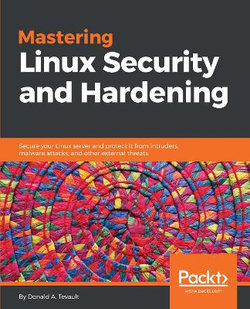Key Features
Leverage this guide to confidently deliver a system that reduces the risk of being hacked
Perform a number of advanced Linux security techniques such as network service detection, user authentication, controlling special permissions, encrypting file systems, and much more
Master the art of securing a Linux environment with this end-to-end practical guide
Book DescriptionThis book has extensive coverage of techniques that will help prevent attackers from breaching your system, by building a much more secure Linux environment. You will learn various security techniques such as SSH hardening, network service detection, setting up firewalls, encrypting file systems, protecting user accounts, authentication processes, and so on. Moving forward, you will also develop hands-on skills with advanced Linux permissions, access control, special modes, and more. Lastly, this book will also cover best practices and troubleshooting techniques to get your work done efficiently.
By the end of this book, you will be confident in delivering a system that will be much harder to compromise.
What you will learn
Use various techniques to prevent intruders from accessing sensitive data
Prevent intruders from planting malware, and detect whether malware has been planted
Prevent insiders from accessing data that they aren't authorized to access
Do quick checks to see whether a computer is running network services that it doesn't need to run
Learn security techniques that are common to all Linux distros, and some that are distro-specific
Who this book is forIf you are a systems administrator or a network engineer interested in making your Linux environment more secure, then this book is for you. Security consultants wanting to enhance their Linux security skills will also benefit from this book. Prior knowledge of Linux is mandatory.




Share This Book: